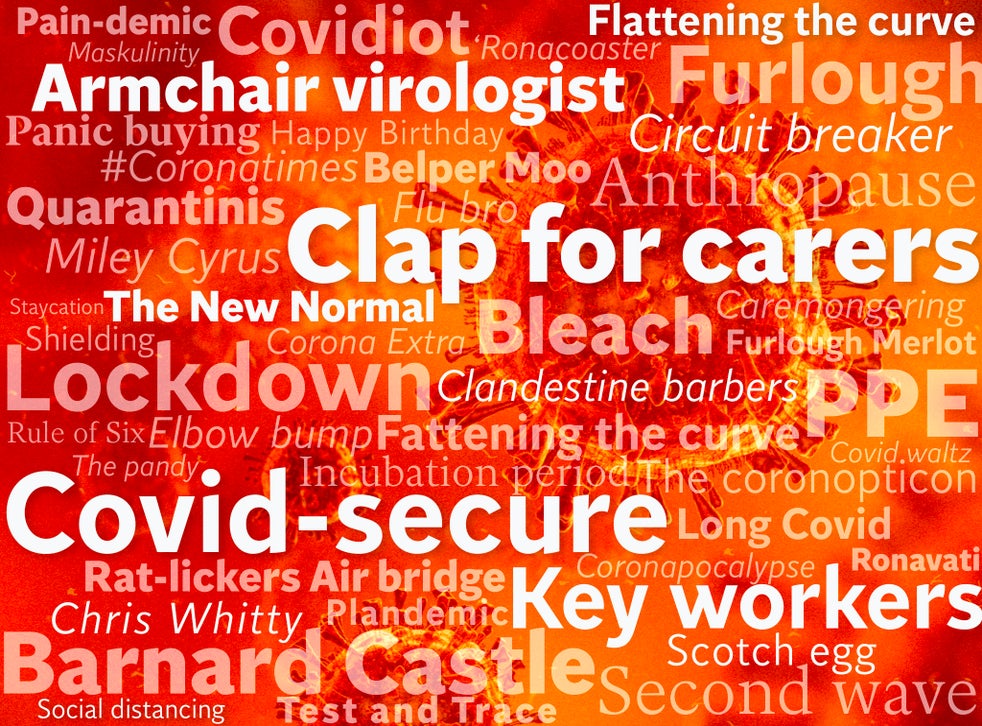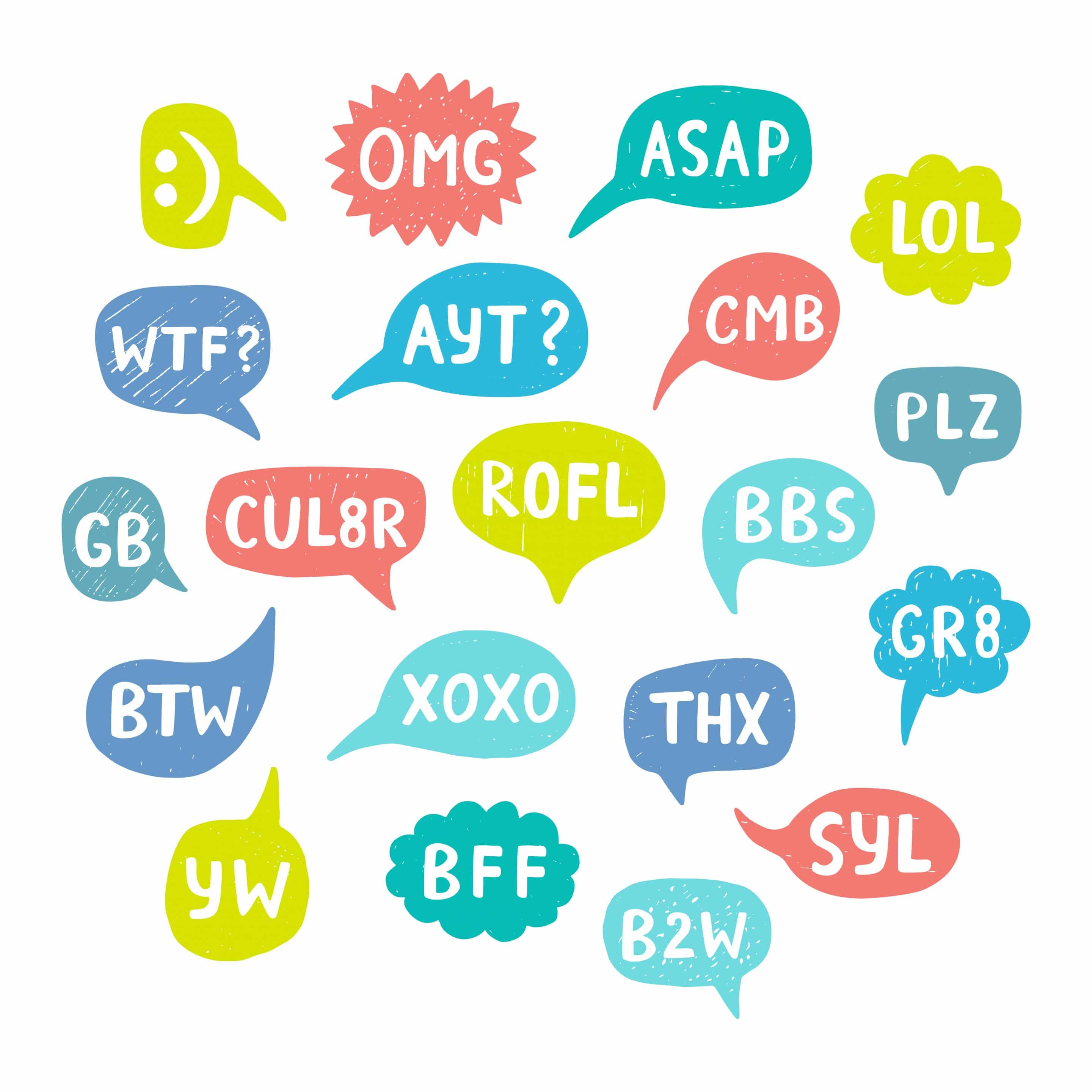The second part of my Lockdown Lexicon, Covidictionary, Glossary of Coronacoinages
In trying to make sense of our new circumstances, under lockdown, in social isolation or distancing, we must come to terms with an array of new language, some of it unfamiliar and difficult to process, some pre-existing but deployed in new ways. Many of us, though, are empowering ourselves by inventing and exchanging our own expressions, some of which have already escaped the confines of the family or the virtual work group.
I listed in my last post some of the scientific and technical terms which have moved into everyday usage. Those can seem intimidating – for good reasons – but most have been readily understood.
This time I’m looking at the language that homeworkers and locked-down friends, families and individuals, in some cases journalists too, in English-speaking areas have coined to fill the gaps in the official narratives and to find ways of expressing concepts that simply didn’t apply a few weeks ago. This includes nicknames, jargon, slang, abbreviations, puns and recent catchphrases and clichés.
I have tried to categorise the terms: again, some have become familiar by now while others may remain mysterious to many. For the moment this is a work in progress – an ongoing project to track the language of the crisis and to operate a linguistic ‘rapid response’ in gathering data.
Although it is a first draft, I thought it important to publish the list now (you can find more on many of these expressions, which won’t appear in standard dictionaries for some time, simply by Googling) and to appeal for anyone reading it to send me new terms, either to this website or to Twitter @tonythorne007. As the list grows I will thank and credit as many contributors as I can.
These are the new expressions, in no particular order, but divided roughly according to theme or topic (there are some terms – isocosm, meaning the contracted reality we are now living in – is one, which could fit under several headings)…
- Describing the new realities
Anthropause – the hiatus in human activities occasioned by the pandemic, seen in terms of its effects on nature, wildlife, etc.
Coronaverse (Guardian) – the now prevailing socio-economic order
Quarantimes – a hashtag or label for the prevailing circumstances under lockdown due to the coronavirus pandemic
#Coronatimes – a hashtag on Instagram and Twitter: the period we are presently living through
BCV, B.C – (the period) before corona(virus)
Common invisible enemy (NATO) – virus as a sinister threat to the collectivity
Coronapocalypse – the effects of coronavirus framed as catastrophe
Radical uncertainty – doubts and uncertainty around decision-making in an unknowable future (title of a work by John Kay and Mervyn King)
Viral anxiety (New Statesman) – fear and uncertainty, sometimes excessive, due to the COVID-19 outbreak and its ramifications
Disinformation pandemic – the spread of fake news and false theories
Infodemic – the accelerated spread of disinformation
The coronopticon (Economist) – the notion of a national or global system of surveillance and control
Biosurveillance – monitoring the occurrence of contagion in a population
Security hygiene – methods intended to counter online scams, frauds and misuse of AI
Digital vigilance – raising awareness of and guarding against cybercrime and fraudulent claims
#coronanoia – paranoia induced by conditions obtaining in the pandemic
Caremongering (Canada and India) – organised acts of kindness and propagation of good news by volunteers
Armchair virologist – an unqualified self-styled expert on viral spread dispensing explanations and/or advice
Coronasplaining – purporting to explain aspects of the coronavirus-induced crisis, particularly to those who understand it better than the explainer
Coronaspiracy theories – conspiracy theories circulating as a result of the spread of COVID-19
Pancession – a pandemic-associated widespread economic recession
Disaster capitalism – profiting, profiteering and exploitation in conditions of local and global crisis
Disaster altruism – acts of benevolence in response to local and global crisis
#lockdowners – individuals coping with life in conditions of isolation
Wobble room – a safe physical space designated for the use of those experiencing psychological distress
Corona warriors (India) – frontline professionals, also known as covid-19 warriors, working to control the pandemic
Covexit – an exit strategy permitting relaxing of confinement and economic recovery following coronavirus-related restrictions
Second wave – a resurgence in the number of cases of infection following the relaxation of initial containment procedures
Corona crunch – the dramatic impact of the pandemic on e.g university income, investment returns
Post-normal science – instances where crucial socioeconomic decisions must be made despite uncertainty as to the relevant scientific facts
Contagion chivalry (New York Times) – an act or acts of selflessness during confinement
Coronacoaster – successive feelings of elation and despair experienced under conditions of confinement
#coronaclickbait – marketing messages or invitations to read information playing on COVID-19 fears
Loxit – the process of exiting from lockdown impositions
Loxino – lockdown exit in name only: an only apparent or partial transition
Circuit-breakers – halting an exit from lockdown by closing re-opened venues or ceasing re-started activities
#unlockdown – the process of relaxing or ending social and physical restrictions, or the period following their ending; equivalent to, or translation of the French déconfinement
Coronaphobia (Daily Mail) – fear experienced by the public at the prospect of having to return to work, send children back to school, use public transport, etc.
Bubble – a social group, a small number of family members and/or friends or teachers and students permitted to interact while wider social constraints continue, also a geographical zone within which travel and trade is permitted
Coronawashing – corporations or individuals taking advantage of the pandemic to promote their altruism, philanthropy and achievements
Cleanliness theatre/er – conspicuously thorough cleaning of hotels, restaurants, etc., intended to reassure customers: if in hospitals and public places it is known as hygiene theatre/er
Vaccine nationalism – competing to discover and produce an antivirus vaccine (benefitting from prestige thus acquired) and potentially then restricting availability to one’s own citizens
Air bridge – a travel corridor between two or more states allowing passage without quarantine. In July 2020, amid confusion, official messaging began to substitute the phrase ‘international travel corridors’
Scarring – long term negative effects resulting from initial harm suffered during social and/or economic upheaval
Security theater (American) – measures that make individuals feel safer without necessarily actually protecting them: public temperature measuring and airport security procedures are examples
Lockstalgia (Times) – the notion that we may look back fondly upon the period of confinement
Clandestine barbers – hairdressers operating illicitly before being allowed to reopen after lockdown
Decompression – the release of inhibitions and surge in misbehaviour expected following the opening of UK pubs and restaurants on 4 July 2020
Safecation – a holiday in a destination thought to be safe while the pandemic continues elsewhere
Wet pubs (Irish) – pubs selling only drinks and not food, so the last to be allowed to open after lockdown
#casedemic – the suggestion that governments are misleadingly using case numbers rather than more meaningful indices in order to implement unnecessary restrictions in what is actually a waning pandemic
Tech-celeration – during 2020 the pandemic accelerated the adoption of many technological behaviours, from video-conferencing and online shopping to remote working and distance learning
Parklet – an extension of a city pavement to provide additional outdoor seating or leisure space when social distancing is enforced and indoor spaces are subject to restrictions
Risk normalisation – a relaxing of vigilance and compliance with regulations by a public now becoming used to pandemic conditions, observed in November 2020 in the UK
Vaccine hesitancy – a reluctance to take, or fear of the consequences of taking the coronavirus vaccine once available (e.g in the UK from December 2020)
Corona-compromised – (of an event) called off, postponed or abandoned due to the ongoing threat of the virus
Twindemic – a posited scenario in which an epidemic, such as COVID, is accompanied by an outbreak of a second infectious disease, such as human or non-human influenza
Pandemicide – gross negligence or deliberate strategy leading to widespread loss of life during the pandemic, a charge levelled at Donald Trump in a September 2020 publication
Coronasomnia (Washington Post) – sleeplessness as a result of anxiety related to the coronavirus pandemic
Coronaversary – the anniversary, in mid-March 2021, of the first tangible reactions to, and realisation of the impact of COVID-19 infections
Vaccine bounce (New Statesman) – the upswing in approval ratings for the UK government following public perceptions of a successful vaccination programme
Re-entry syndrome – the stresses accompanying adjusting to emergence from lockdown
Scariant – a virus mutation or variant which is promoted as being alarming without adequate evidence
Jab-fest – a frantic launch of a large-scale vaccination programme as in India in April 2021
Surge-jabbing – an intensification of a vaccination programme to deal with a highly contagious new variant, as in the UK in May 20121
Variant of concern – a new and more dangerous virus strain
Exit wave – a resurgence in COVID infections predicted to follow an ending of restrictions, of the kind planned for July 19 2021 in the UK
Immunity debt – the phenomenon whereby cases of other infectious diseases, such as norovirus, increase more than usual once protective measures against COVID are removed.
Breakthrough infections – cases in which individuals become infected despite having been vaccinated
Fauxvid – symptoms of malaise mistaken for COVID
NOVID – a common cold whose symptoms mimic those of COVID
PPSD – ‘post-pandemic stress disorder’, a condition promoted by psychotherapist Owen O’Kane in the summer of 2021
Flurona – a rare combined infection of influenza and COVID, recorded in Israel in December 2021
Long social distancing – the phenomenon whereby anti-pandemic precautions continue to be practised by some after the pandemic seems to have subsided
Tripledemic – the possible scenario, for the winter of 2022, in which health services may be faced by COVID, seasonal flu and additional respiratory infections
- Nicknames
Rona, Lady Rona, Miss Rona, roni, rone – the coronavirus personified/familiarised
The rona – the coronavirus
The ‘vid – coronavirus
The pandy – the global pandemic, (by Autumn 2020 sometimes in the form panny-D)
The pando (Australian) – the coronavirus pandemic
nCoV – the coronavirus in technical designation or shorthand
Boomer remover – the coronavirus viewed as a phenomenon resulting in the decimation of the babyboomer demographic
Nightingales – first used as a nickname for those singing or performing morale-boosting music from balconies, in gardens, later abandoned when the Nightingale emergency hospitals were opened (or rather, announced but not opened) across the UK
Long-haulers – recovered victims of the virus who suffer long-term after-effects
Locky D – lockdown familiarised
Rat-lickers – those refusing to wear a mask (from the idea that potential victims of the bubonic plague licked rats to ward off infection)
Vaccine-hunters (CNN) – desperate individuals who, rather than wait for invitation to be vaccinated, stalk a pharmacy, hospital or other vaccination site in the hope of obtaining a leftover dose
Innoculati – the fortunate individuals who have already been vaccinated
Halfcinated – having received the first of two vaccine doses
Strollout (Australia) – the rollout of anti-virus vaccination, perceived as being too slow
Nosers – mask wearers who negate its effect by leaving their nose uncovered
- Slang
Miley Cyrus (UK rhyming slang) – coronavirus
Covidiot – a person behaving irresponsibly in conditions of containment
Morona – a person behaving stupidly because of or during the coronavirus outbreak
Coronalusional – suffering from disordered thinking as a result of or during the COVID-19 crisis
Sanny (Australian) – hand sanitiser
Iso (Australian) – (self-) isolation
Isobar (Australian) – a home bar stocked, displayed and/or depleted in confinement
Isodesk (Australian) – a workplace improvised or used in confinement
Coronacation – cessation of study or work due to the pandemic, viewed as a holiday
Corona break – a period of confinement envisaged as a short holiday
Drivecation – a holiday, typically in a motorhome, in one’s own driveway
Hamsterkaufing – stockpiling and/or hoarding (adapted from German)
Coronaspeck – extra girth resulting from overeating in confinement
The COVID 19(lbs) (American) – extra body weight accrued during quarantine
Quaz (Australian) – to quarantine (oneself)
Doomscrolling/doomsurfing – obsessively accessing upsetting news online
Coroanacuts – haircuts carried out at home, especially when less than successful
De-roning – attempting to remove traces of coronavirus by cleaning/disinfecting items that have recently entered the home
Zumped –‘dumped’ by a partner via videolink or otherwise online
Ronavation – renovation or refurbishment during lockdown, an Instragram hashtag
Coronacranky – short-tempered as a result of enduring lockdown
Flu bro (American) – a male coronavirus denier, from their assertion ‘It’s just the flu, bro.’
Quarandating (Canadian) – using cellular dating apps to meet people and go on virtual dates through platforms such as FaceTime
Zoombie – someone incapacitated by too much screen time, or a malicious disruptor of a videoconference
Quarantanning – sun bathing or using tanning equipment during confinement
Quaran-stream – binge-watch TV series, movies while enduring lockdown
Smizing – smiling with the eyes, as when wearing a facemask (a term coined by US celebrity Tyra Banks in 2009)
Spendemic – a dramatic increase in online shopping by those confined during the coronavirus crisis
Coronasshole – first applied in March 2020 to US panic buyers, then in June to US citizens refusing to wear masks. In July the synonym #maskhole began to trend on social media
Spreadneck (American) – an ignorant and/or stubborn anti-vaxxer
Maskulinity – a macho refusal to wear a face covering
Furlough Merlot – a red wine assuaging the anxiety of lockdown and WFH
Lockdown locks – long and /or unruly hair following months without cutting or styling
Blursday – an undifferentiated day or date due to uncertainty after long confinement and isolation
Airgasm – the intense pleasurable feeling experienced when able to remove a mask and breathe freely again
Vaxinista – someone who flaunts the fact that they have been vaccinated as if a fashion statement
Vaccine sommelier – a person delaying vaccination until they can choose their preferred brand of vaccine
Pinged – advised by the NHS phone app to self-isolate
Pandemic pants (Australian) – track-suit bottoms worn while locked down or WFH
Nerd immunity – the notion, based on studies reported in February 2021, that those wearing glasses are less susceptible to COVID infection
Corona classic – the original strain of infection rather than a later variant
Partygate – the scandal surrounding allegations that those in authority flouted their own restrictions by holding illicit celebrations and gatherings
- Homeworking and teleconferencing
WFH, wfh – working from home
Productivity ninja – a stress-free, purposeful and high-achieving worker (title of work by Graham Allcott)
Covidpreneurs (Irish Times) – individuals or businesses succeeding in thriving and innovating in a pandemic environment
Zoombombing – hijacking and/or interrupting videoconferencing on the Zoom platform
Slackers – remote workers using the Slack groupworking application(s)
Virtual backgrounding** – adjusting one’s visible décor for videoconferencing
Videofurbishing** – enhancing one’s décor prior to videoconferencing
Zoom room – part of one’s home kept clean and inviting for use as videocalling background
Quarantini – a martini mixed and consumed in conditions of confinement
Locktail hour – a time allotted to consumption of cocktails while isolating
Upperwear – clothing selected for display above the waist only
Telecommutercore (Guardian) – casual clothing selected for use when videoconferencing and/or home-based working
Infits – outfits worn in conditions of confinement
Quaransheen** – a shiny nose and/or forehead visible while engaged in videoconferencing
Zoomlift** – the cosmetic surgery supposedly required as soon as obligatory online interaction ends
Coronaviva – an oral examination or thesis defence taken online during lockdown
Quaranteams – groups forming and performing – music or competing in quizzes for example – together virtually during lockdown
Quaranqueens – a woman excelling during lockdown, particularly one excessively cleaning and tidying
Quarantrolls – individuals sending malicious online messages in conditions of and/or referring to quarantine
Quarantunes – music produced and/or performed under lockdown
Quaranzine – a magazine produced under lockdown
Coronalit – literature produced during/inspired by the pandemic
Corona-fi – fiction or science-fiction produced during/inspired by the pandemic
Zoom mullet – a hairstyle developed in lockdown which is ‘camera-ready’ (presentable to a webcam) at front and sides and dishevelled at the rear
#isobaking – home-baking in confinement and/or exchanging recipes: a hashtag on TikTok and Instagram
Zoomitzvah (Jewish Chronicle) – a bar mitzvah celebrated via video app in confinement
Homeference – a virtual conference that participants can attend remotely
Zoomed out – exhausted and/or disoriented after spending too much time in videoconferences
Zoom fatigue – a draining of energy resulting from the unusual stresses involved in interactions in virtual meetings
The wipe-away – the high-visibility handwaving that indicates the person is leaving a virtual meeting
Toxic productivity – the unfair expectation that professionals, creatives and others should be able to stay productive, even achieve more during adverse situations such as the Covid-19 pandemic
Uberise – to emulate Uber in moving to a system whereby employees decide which hours of the day they will plug in under the work from home model during the pandemic
The elephant in the Zoom – an unmentioned presence or unacknowledged issue in an online meeting, or an elephant themed background or video
Desk disco – defined by translator and copywriter Ian Winick as ‘taking a few minutes out to boogie on down at your desk’
Hate-wear (New York Times) – clothing items, usually unfashionable, possibly also uncomfortable, worn in confinement for their utility rather than their style
Sadwear (Esquire) – ‘clothes that make us feel better when we’re sad, specifically born out of the existential ennui of lockdown’
Apocalypse beard (Guardian) – uncontrolled facial hair that can double as a face-warmer
Hybrid working – a combination of working remotely and on-site
WFA – working from anywhere. ‘It also used to be called telecommuting – that’s an example of how language changes over time, says Tracey Fritcher, principal strategist of employee experience at ServiceNow.’ Their useful glossary, published by the Guardian, is here****
Pandemic posture – ‘slouching, slumping and hunching’, the unhealthy effects of 18 months of working at home or in unstructured environments
Legacy hand – a hand raised to ask a question in a virtual discussion and the hand is not subsequently lowered, leading to confusion
- Demographics
Coronials – The generation born after December 2020 as a result of the enforced quarantining of their parents due to the COVID-19 pandemic
Gen(eration) C – in 2018 designated young ‘connected consumers’, now may refer to young people coming of age since the onset of the coronavirus crisis
Quaranteens – the generation who will become teenagers in 2033 -4
- Security measures
Elbump – an elbow contact in place of handshaking or other physical greeting
Coronadodge – swerving to avoid passers-by to comply with distance restrictions
Couple-spreading – couples permitted under regulations to walk together taking up excessive space in public places
Covid waltz – manoeuvring to avoid close contact with passers-by while distance restrictions are in place
Loopholing (South African) – exploiting imprecisions or allowances in distancing restrictions in order to travel
Overreaching – enforcing crisis-related regulations too zealously
Yob-dobbing – reporting someone’s antisocial behaviour to authorities
Ronadobbing (Australian) – informing on those contravening crisis-related restrictions
Coronasnitching ** – informing on those contravening crisis-related restrictions
Covidobbing** – informing on those contravening crisis-related restrictions
Coronagrass** – a person who informs on those contravening crisis-related restrictions
Curtain-twitching – peering at and/or spying on neighbours
Corona-shaming (New York Times) – publicly criticising those, particularly celebrities, who have infringed public health regulations
Masklessness – wearing no face-covering, in US often as a gesture of defiance and/or disbelief in standard pandemic narratives and official advice
Whack-a-mole – a piecemeal response to a major problem, such as ad hoc local lockdowns in the context of a second wave of infection
Cohorting – imposed grouping of health care workers and others, for example teachers and students working together or prisoners and guards, who are potentially susceptible to viral infection
Covid marshals – officials sent to public locations to enforce new UK social distancing rules from September 2020
Lockdown light – used in Germany and elsewhere in October 2020 to describe a set of restrictions on movement and behaviour that falls short of a full lockdown
Tier 4 – an upgrading of the UK’s three-tier pandemic management system of graduated local lockdowns to a national lockdown, envisaged from November 2020
Mockdown – a term trending in November 2020 and again in January 2021 indicating a lockdown that is insufficiently enforced and/or widely disregarded
- Inappropriate terms
The China virus
Tsunami
Epicenter (NY)
Herd (UK Government)
Cull (Telegraph)
Supersurge
Plague
Coronacoma (New York Times)
War metaphors – see https://blogs.nottingham.ac.uk/makingsciencepublic/2020/03/17/metaphors-in-the-time-of-coronavirus/
Body count
Take it on the chin (Boris Johnson)
Take one for the team (Stanley Johnson)
Operation last gasp (Boris Johnson)
Brave fighter
The great leveller
Following the science (UK Government) ***
Green shoots (UK Government advisor)
Blitz spirit
Over interpreting
Lockdown Stasi (Daily Mail)
Perfect storm
Wet market
#Scamdemic, #shamdemic, #Plannedemic, #Coronascam – hashtags used by US conspiracy theorists attempting to discredit orthodox narratives of the pandemic
Invisible mugger (Boris Johnson)
Good British common sense (Boris Johnson)
PPE equipment
Hiding at home
#SecondCummings
World-beating track-and-trace operation (Boris Johnson)
Muzzle
Mutant algorithm (Boris Johnson)
Moonshot (UK Government)
The last chance saloon
Panicdemic (Peter Hitchens)
…not take the foot off the neck of the beast (Boris Johnson)
V-day
Ahead of the curve (Priti Patel)
Plague Island
Let the bodies pile high in their thousands (Boris Johnson, allegedly)
The Indian variant
Freedom Day
Big Bang
Demob happy (Boris Johnson)
Learn to live with the virus
The Johnson variant
Pingdemic
Cower (Sajid Javid)
Miasmatists – a slur directed at those rightly asserting that coronavirus was airborne
Rampdown
Ride it out (Boris Johnson)
Eat Out To Help Out (Rishi Sunak)
- Emoji
https://emojipedia.org/coronavirus/
‘You know how Gen Z are using ‘cornteen’ as a playful misspelling of ‘quarantine’? This is now reflected in the emoji spelling teen.’
In Spain and Italy the combination 👑🦠 is used, as ‘corona’ is their word for crown
- Recently trending terms
Unprecedented
Cataclysm(ic)
Hunker down
Ramp up
Mobilisation
Cabin fever
Stir-crazy
Dark days
Strange days/times
Uncertain times
The new normal
Exit strategy
Bounceback/bounce back
Behind the curve
Calamitous
Infinite present
Snap back
Game changer
Gaslighting
Easing
Hubris
Obfuscation
Evolving
Mandatory
The Before Time(s)
U-turns
Fatigue
Compliance
Trying times
*Quote: “When some idiot second guesses a specialist, e.g. when a cartoonist pronounces on epidemiology lessons: to stay in your lane you must know your lane”
**These are terms which have been proposed in online discussions but which may not yet have embedded themselves in the national conversation
*** From forensic linguist Professor Tim Grant; “following the science” There’s no such thing as “the science”. Scientific conclusions are often subtle and slippery. This phrase is being used to avoid responsibility by those taking political decisions. It’s the job of scientists to question, to disagree, to propose alternative explanations, alternative conclusions, to bring to the fore additional evidence that hasn’t been noticed. It’s the job of politicians to weigh this mess of conflictual evidence and make decisions. This decision making is hard and requires taking responsibility. Using “following the science” as cover, is spin doctoring of the worst kind. It’s cowardly, distancing, its-not-my-fault playing politics with this appalling crisis. It’s a failure of political leadership.
**** The very useful glossary of WFH and office-related terms published in the Guardian in July 2021…https://www.theguardian.com/lets-workflow-it/2021/jul/12/free-range-worker-to-zoom-bombing-your-complete-guide-to-the-new-office-jargon
It was gratifying in mid-April to see my studies referenced – very informally – in two of the UK’s highest circulation newspapers…
And to talk – very informally again – on the subject on Canadian radio…
More recently Michael Skapinker discussed covid-related language innovation in the Financial Times…
Peter Bakker and his colleagues at the University of Aarhus, Denmark have kindly shared their (not entirely serious) compilation of COVID-related language novelties…
COVIDictionary. Your go-to dictionary in times of Coronavirus and COVID-19
And Alice Moldovan, with input from Howie Manns and me, highlights Anglo-Australian rhyming slang…
In July 2020 Dutch news site NU.nl featured coronacoinages, with contributions by Ton den Boon and me…
https://www.nu.nl/281763/video/quarantinderen-en-toogviroloog-hoe-corona-de-taal-verrijkte.html
In July 2020 the New Yorker published its own guide to coronaspeak. While the content is amusing, I will not be adding these terms to my glossary until I’m sure they are in circulation among users other than journalists…
https://www.newyorker.com/magazine/2020/07/20/lexicon-for-a-pandemic
Although it’s distasteful to someone of my puritan sensibilities, I should also include this link to the Economist‘s guide to pandemic dating jargon…
https://www.economist.com/1843/2020/07/15/pandating-coronavirus-and-the-language-of-love
In August 2020 one of the first, if not the first, academic studies of COVID-related neologisms appeared, with a very useful multilingual bibliography:
In October students at UCL London posted a very useful update on COVID-related nicknames and slang:






















